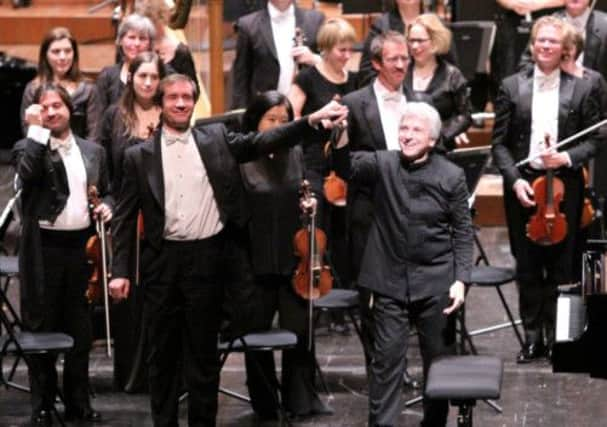Ken Walton: The RSNO are embracing technology


I’m sitting at home watching Sir John Eliot Gardiner and Giovanni Antonini conduct the Royal Concertgebouw Orchestra (RCO) in two Mozart symphonies. The camera angles are superb, the sound is surprisingly good, and my understanding of what is going on is enhanced by documentary features in which both conductors convey their understanding of, and their approach to, conducting the music.
This is all made possible by the RCO’s new top-quality iPad app, a digital platform that takes its concert hall activity out into the wider world. In other words, you don’t have to live in Amsterdam to be a regular fan. Of course, the Berlin Philharmonic has been doing this brilliantly for some time with its own virtual concert hall.
Advertisement
Hide AdSo where are Scotland’s orchestras in this technological revolution? In truth, there is nothing at the moment that could match these continental models in visibility and ambition, but that’s mainly because current initiatives, such as the BBC SSO’s digital activity at Glasgow’s City Halls, over and above its core broadcasting remit, are almost exclusively education-based, therefore less geared to wider public and commercial consumption.
But I had an interesting chat with Royal Scottish National Orchestra (RSNO) chief executive Michael Elliott and music director Peter Oundjian during the orchestra’s recent visit to Aix-en-Provence, about new digital plans integral to the RSNO’s move next summer into a new custom-built HQ at Glasgow Royal Concert Hall.
Once again, the priority will be education and outreach, initially an expansion of what the RSNO piloted during a highly-successful Shetland project in 2011. “The challenge was to have the players communicate across a widespread islands community through web technology,” says Elliott. “It convinced us that there was a golden opportunity in our new facility to communicate more effectively right across Scotland.”
But establishing the core facility is only a starting point, says Oundjian. “Not many orchestras have situations like this. The New World Symphony has a very interesting Frank Gehry building in Miami Beach. I’ve seen what they’re able to do in terms of conveyance of artistic ideas and ideals, entertainment, performance and education. It’s really incredible what a facility like this allows you to do.
“Most kids who live around Glasgow or Edinburgh will occasionally get to hear the RSNO. There is a fantastic local programme in place. But still the vast majority of people are too far away from a symphony orchestra that has the capacity to inspire people to have music as part of their life. So this suddenly changes all of that, because you need a central facility from which to do it.”
Both Elliott and Oundjian are determined – in an area where good intentions have so often been thwarted by bad advice, lack of strategy and miscalculation of cost – to get things right. “We’ve got the rooms, the cabling built in, and points for cameras in the main concert auditorium, and I’ve brought in Michael McTernan, who advised Scottish Television on digital strategy, to help formulate ours. I expect that to be mapped out by February,” Elliott says.
Advertisement
Hide AdEducation will take priority, with interactivity as a crucial element. But what wider, more ambitious digital possibilities does he expect the strategy to look into?
“I’m interested in the link with the main concert hall,” says Elliott. “I’m told the quality of the technology by 2015 should be such there would be no reason why the BBC couldn’t take feed directly from us. Again online, could we go some way down the Berlin Phil route, or broadcast via cinemas?”
Advertisement
Hide AdOundjian loves the potential that technology offers to get audiences closer to the musicians, such as screened close-ups of sections of the orchestra. “Visually highlighting important aspects of the music helps intensify the listener’s experience,” he argues. In practical terms, he adds, he could even rehearse the RSNO Chorus, which starts repertoire much earlier than the orchestra, from his home 3,000 miles away.
Elliott also has his eyes on the marketing potential, including ways to do more on social media. “People are using iPads in front of TV sets. How do you use both platforms? More importantly, how do you get people to try out the live experience?”
So will I be watching the RSNO on my iPad anytime soon? “This is not us going into the virtual world, or working that format as its main platform. We won’t be doing anything on the scale of the Berlin Phil, but we’re holding some interesting discussions with Scottish Television.” So that’ll be a “wait and see” then?